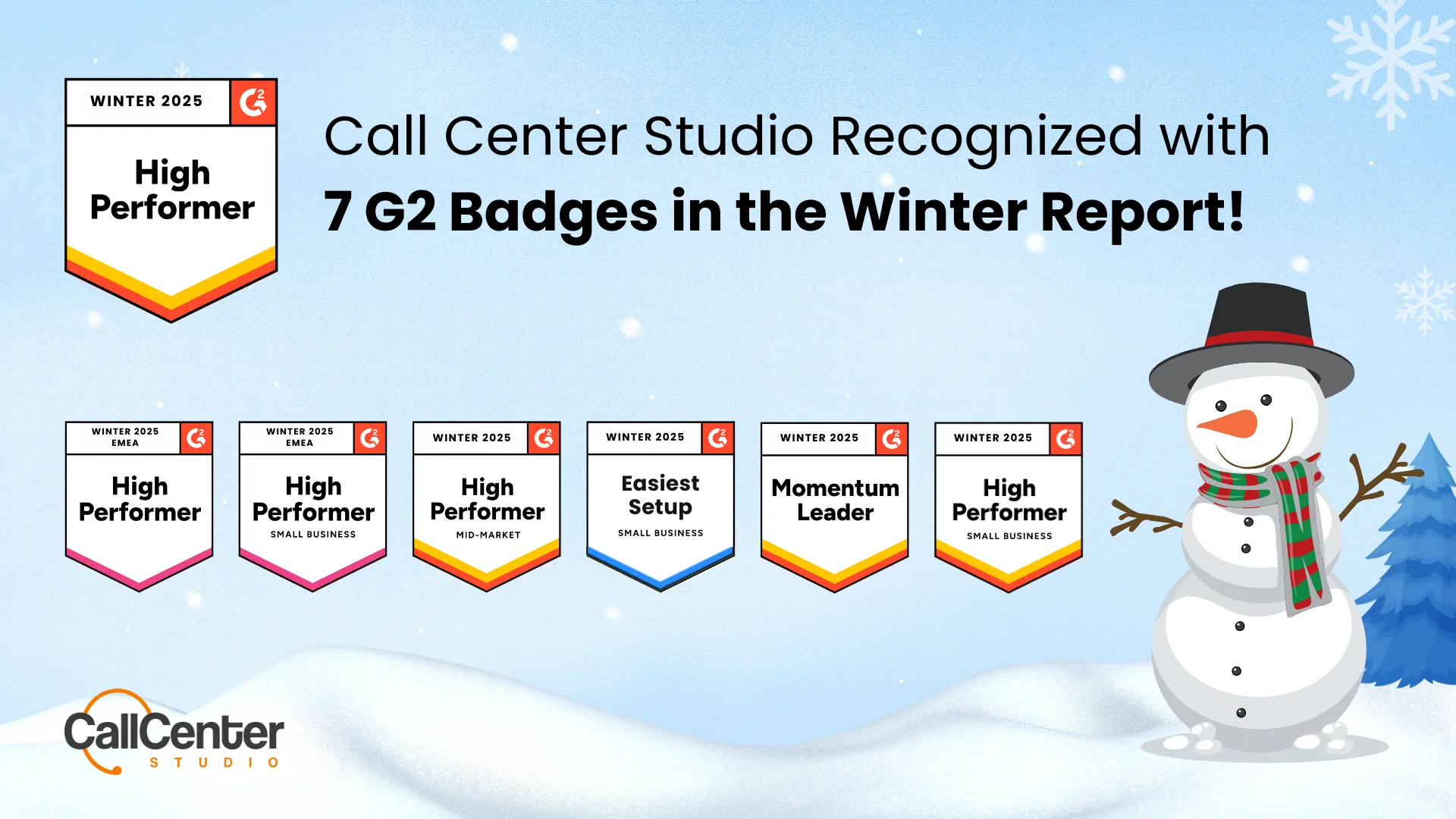If you’re running a call center, one of the fastest ways to figure out if things are going well (or very much not) is by keeping an eye on your CSAT score. Because it’s kind of like your customer’s mood ring.
In this guide, we’re breaking down what CSAT really is, how to measure it properly, and covering the best practices to figure out what’s working and what’s sabotaging your customer experience.
CSAT: Your Customer’s Mood Ring
So, what is CSAT?
It’s basically a fast pulse check after a customer talks to your team. You’re asking them one simple question:
“How satisfied were you with your call today?”
Customers answer using a scale and this scale is usually 1 to 5 or 1 to 10. Then you take the positive responses (typically 4s and 5s), divide by the total responses, and Boom!: you’ve got your CSAT percentage.
Simple and powerful. While it doesn’t tell you everything, it gives you a clear, immediate sense of how your service is landing in real time.
When you measure your CSAT that means you are taking your call center’s temperature, so to speak. You’re not diagnosing the full illness just yet – but you’ll know if something’s off.
How to Measure CSAT Without Botching the Basics
You calculate CSAT with following formula:
(number of satisfied responses ÷ total responses) × 100 = CSAT %
So, if 180 out of 240 customers rate you a 4 or 5? That’s a 75% CSAT.
But this is not the hard part. It gets tricky when you need to learn how to define it. Because the definition of “satisfied” can vary.
Defining Satisfaction
Some organizations only count the very highest score (like a 5 on a 1–5 scale) when calculating satisfaction. That’s known as top-box scoring, and it gives you a stricter read on who’s truly delighted. This is great if you’re aiming for excellence and want to set a high bar.
Others take a more inclusive approach and count both 4s and 5s as satisfied, which gives a broader, more forgiving view of overall happiness. Useful when you’re tracking overall contentment rather than perfection.
Both methods are valid. It just depends on how high you’re setting the bar.
Getting over the response biases
Response biases happen when the people who respond to your survey aren’t a balanced reflection of your entire customer base.
It’s often the happiest or the most frustrated customers who take the time to reply, while the majority in the middle stays silent.
This can skew your CSAT data and paint an overly rosy or unfairly negative picture.
The important point is to watch out for dips in survey participation. Sometimes, the number of people answering tells you more than the average score itself. If fewer customers are responding, it could mean they’re disengaged, annoyed, or just don’t believe their feedback will lead to change.
So you need to increase the percentage of answers. To do that:
- Keep your survey short and sweet – one or two questions max.
- Ask right after the call, while it’s still fresh.
- Personalize the message. Use the customer’s name and reference the interaction to make the survey feel relevant.
- Offer a small incentive if possible – a discount code or entry into a prize draw can boost response rates significantly.
CSAT Best Practices: How to Get Reliable Feedback (Without Driving People Nuts)
Measuring CSAT is only helpful if you’re doing it right. So we need to point out maşa topic in that sense.
Timing, Simplicity, and Knowing Your Customer
Timing first.
Do not wait a day or two to ask for feedback. Reach out immediately after the interaction, when the experience is still fresh in the customer’s mind.
Another important point is to avoid overly complicated survey questions.
Keep each question focused. If you’re cramming five things into one, like asking about the agent’s tone, the resolution quality, the wait time, and the app’s design, you’ll get murky answers.
You also need to decide whether your survey should be anonymous. Understanding your audience helps you choose wisely. Some customers will be more honest if their name isn’t attached, while others may want their feedback linked to their account. Learn which type your customers are.
Surveys and Communication Channels
Use multiple channels to reach your customers. Don’t just rely on email; add SMS, in-app surveys, or even a quick IVR prompt. More touchpoints mean more responses.
Second of all, make sure you’re segmenting your surveys properly. Because a customer calling about a billing issue may have a different expectation than one calling for tech support. Tailor your questions accordingly.
Also, don’t overwhelm your audience. If you ask for feedback after every single interaction, people will start ignoring you. That’s what we call “feedback fatigue.”
Lastly, focus on trends over time, not just the average score. A flat or stable CSAT might look fine at a glance, but a deeper dive could reveal small but consistent issues brewing beneath the surface.
Smarter Moves with AI-Powered Call Center Analytics
Here’s where things get futuristic, but also way more efficient.
CSAT is helpful. But when you layer in AI-powered call center analytics, that time you’re talking a full-on diagnostic toolkit. Today, technology helps you to:
- Track CSAT live across every team and call type
- Uncover hidden patterns in customer feedback
- Set up alerts and coaching workflows that drive real results
- Connect CSAT to your full stack of call center performance metrics
Basically, AI connects the dots for you, so you can focus on fixing what matters and celebrating what works.
🚀 Want to make CSAT your call center’s superpower?
Our platform gives you real-time visibility, automated insights, and contact center reporting tools:
- Predictive CSAT: Estimate scores even when surveys go unanswered.
- Real-time dashboards: Spot drops or spikes the moment they happen.
- Auto-tagged feedback themes: Instantly see what’s annoying people the most.
- Alerts: Get notified when satisfaction tanks (before it tanks your retention).
- Voice sentiment analysis: Pick up frustration in tone – even when words sound polite.
- Correlate CSAT with other call center KPIs like AHT, FCR, or escalation rates.
Ready to stop reacting and start predicting? Let’s chat.






